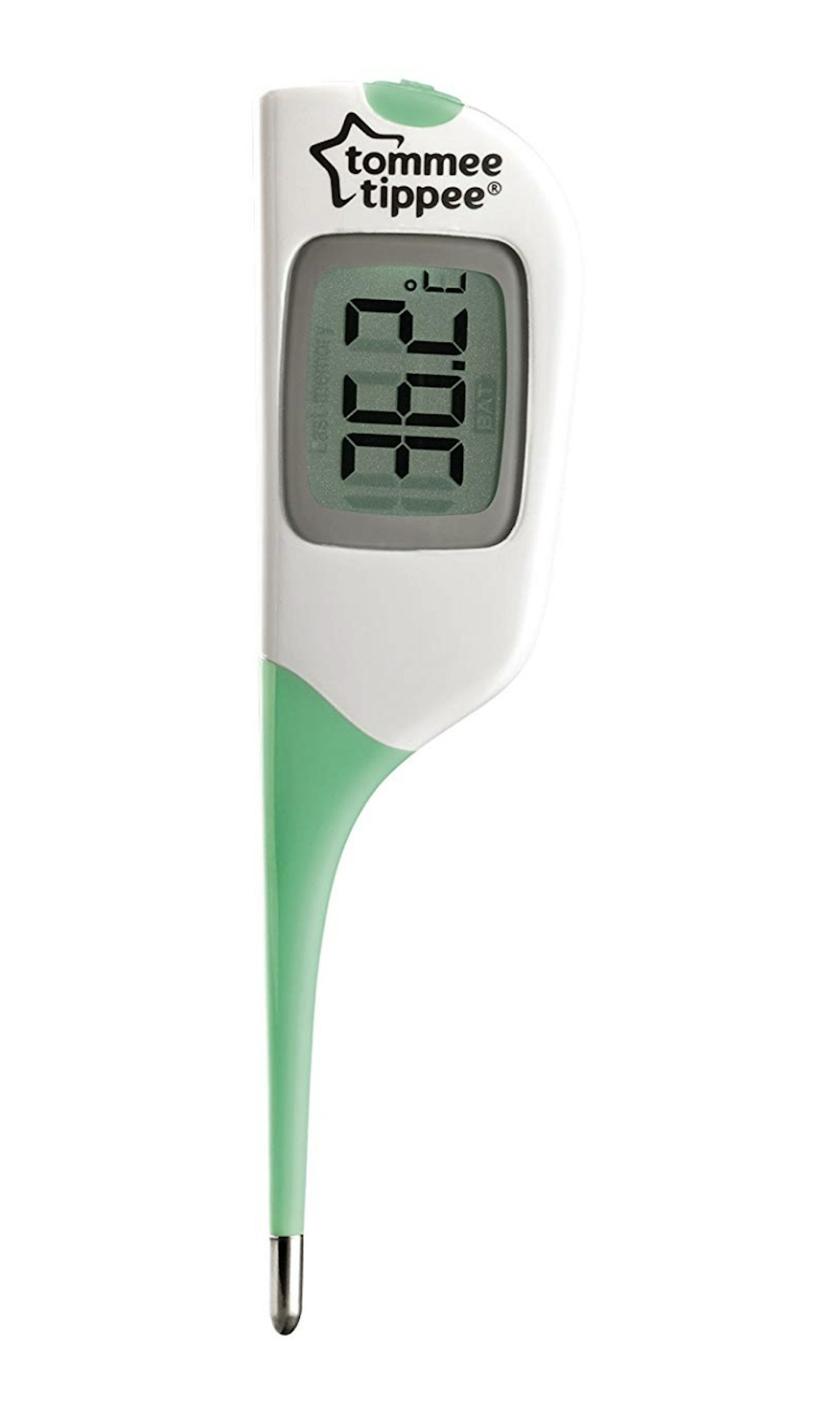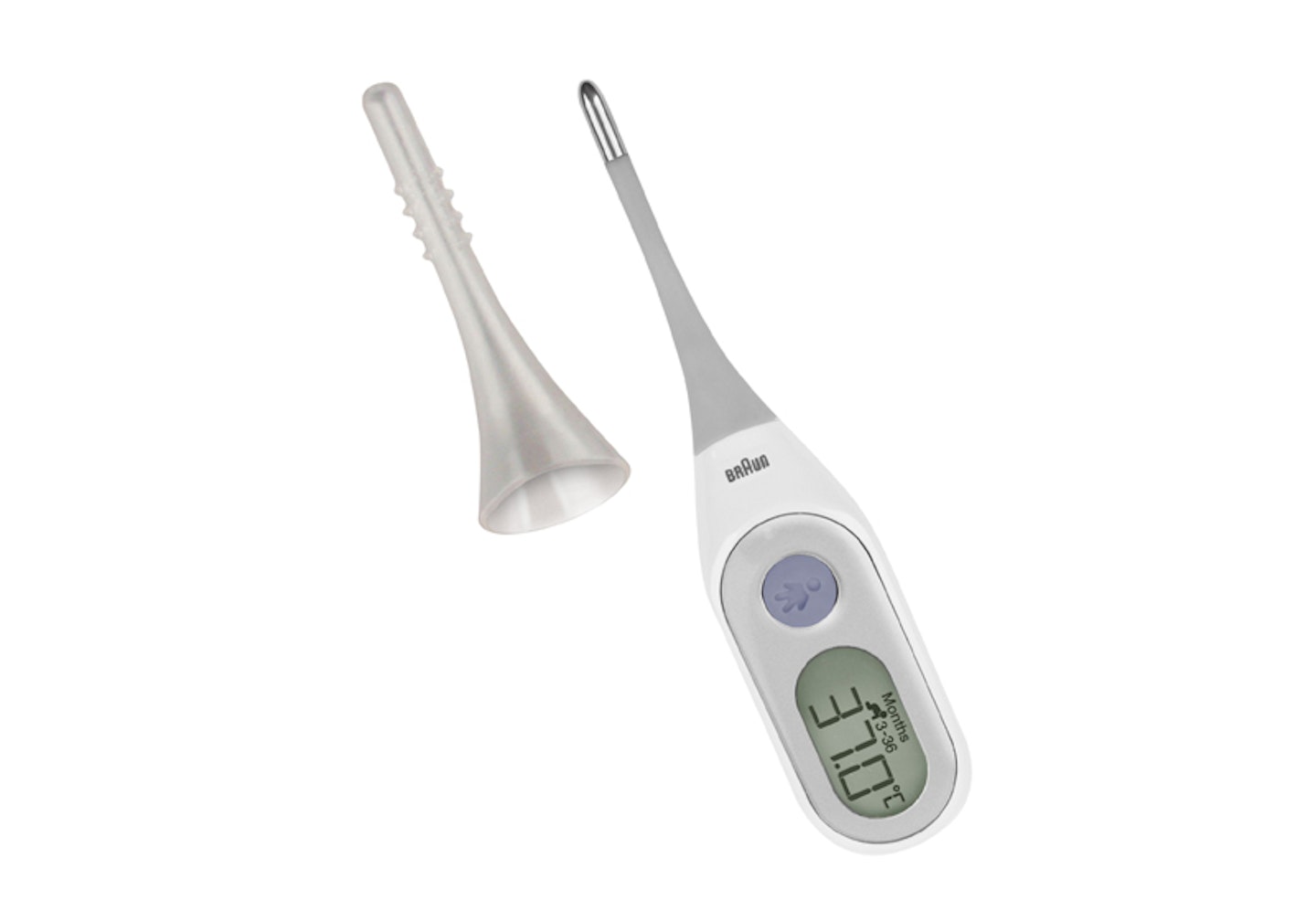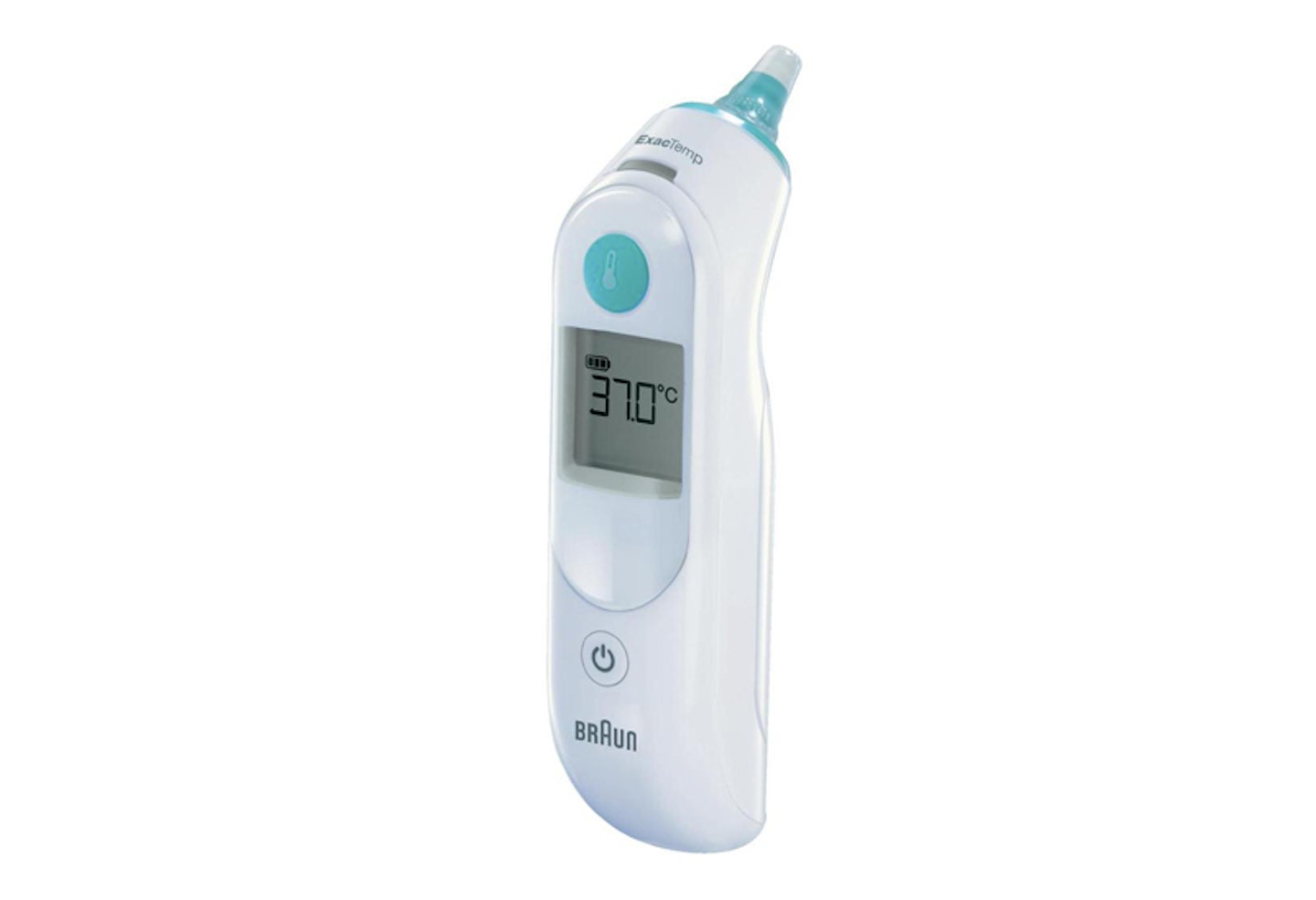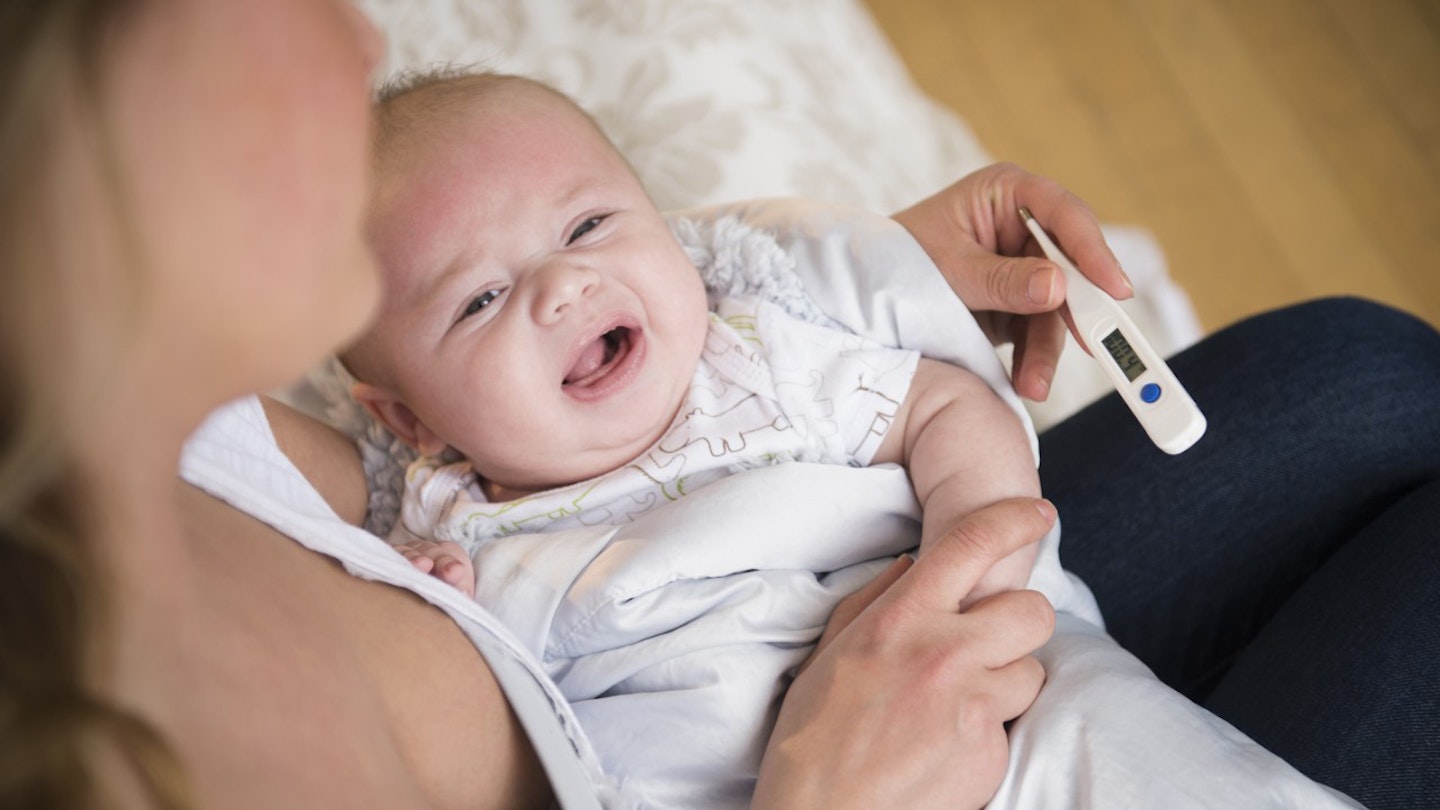Checking if your baby has a fever is simple enough when you have a baby thermometer, right? Sure – but there are still things to keep in mind so you get the most accurate reading of their temperature and can take the best course of action.
Fever in babies can be really scary and whether they feel too warm, seem a bit grizzly or are unwell, there are plenty of reasons why you might want to take your baby’s temperature. Welcome to your baby temperature checklist.
Normal temperature ranges for a baby
Different babies will have different base temperatures but in order for their bodies to function efficiently, their temperature must be around 36.4C.
Measure your baby's temperature when they are well and write it down so you are aware of what it should be the next time you think they may have a high temperature.
Taking your baby’s temperature
If your child is shivering and is less responsive than usual, has flushed cheeks, feels sweaty or is hot to the touch, check what their core body temperature is with a digital thermometer to get the fastest and most accurate reading. We'd recommend keeping a baby thermometer in your family medicine cabinet as you never know when you'll need it.
-
Hold your baby comfortably on your lap and put the thermometer under their armpit (always use the thermometer under the armpit for children under five years of age.
-
Hold their arm close to their body to keep the thermometer in place for the recommended amount of time (usually 15 seconds). If you're using a digital thermometer it will probably beep.
-
Check the display on the thermometer for the reading.
The reading will help you decide whether or not to call a doctor and, when you speak to a medical professional on the phone, they will want to know what your baby’s current temperature is.
If your baby has a temperature of 38C or more, you should call your GP as a fever temperature starts at 37.5C.
"If your child has a temperature of 38 or above, you should always take action to try to lower it," says Dr Elia Maalouf, a consultant paediatrician and neonatologist at the Portland Hospital in London. "Because a very high body temperature can cause a febrile convulsion, a kind of fit when the child’s body becomes still, their arms and legs twitch and they may lose consciousness."
It's worth retaking your child's temperature repeatedly to see whether their symptoms are improving or worsening and if any medicine you administer is having an effect.

Understanding and using a thermometer
A digital thermometer placed under your baby’s armpit is the most accurate way to measure temperature. If you’re using an ear thermometer, make sure it’s properly inserted to avoid incorrect readings. Never place a thermometer in your baby’s mouth as they may injure themself by biting it.
If you follow the manufacturer's instructions on your thermometer, you should get an accurate reading. There are however some factors listed below that can slightly alter the reading:
• If your baby is wrapped in a blanket or cuddling a hot water bottle
• If you are in a very warm room
• If your baby has just taken a bath
• If you have a very active baby or toddler
• If they are wearing a lot of layers of clothes
Thermometers to buy
 1 of 3
1 of 3Tommee Tippee Digital 2-in-1 Thermometer
Perfect for using under your little one's armpit, this easy-to-use thermometer is lightweight, waterproof and gentle on your baby's skin.
Providing a clear and reliable reading in just eight seconds, it's a great addition to any family first aid kit.
 2 of 3
2 of 3Braun Age Precision Stick Thermometer
"This is best for taking the temperature of a young child," says Dr Elia. Place it under the armpit for the specified length of time.
 3 of 3
3 of 3Braun Thermoscan Digital Ear Thermometer
This ear thermometer gives a reading a second after it’s placed inside your child’s ear. Useful if you have a wriggler on your hands. "Only use this on a baby aged three months or over," says Dr Elia.
What is a fever?
Put simply, a fever is a high temperature. The general rule of thumb is that children with a temperature of over 37.5C (99.5F), have a fever. A fever is usually a side effect of your baby’s body fighting an infection such as a cold, sore throat, tonsillitis, or ear infection.
Baby fever symptoms
The primary symptom of a fever is a high temperature of over 37.5C and they will feel hot to the touch and possibly have flushed cheeks and clammy skin. As a result of the fever itself or the infection that has caused the fever, your little one may also be unsettled or upset.
What should I do if my baby has a fever?
Mild fevers are more often than not nothing to worry about and can be treated from home. You should try the following:
Remove some layers
Their high temperature could be a sign that they're overdressed rather than ill, so remove a layer and wait 20 minutes to see if their temperature goes down.
Give them plenty of fluids
Their fever could be a sign of dehydration so make sure they drink plenty of water and see if their temperature improves.
Don't worry about them eating
Your baby should feed or eat if they are hungry and this shouldn't worsen their symptoms.
When to call 111 or your GP
• If your child is under three months old and has a high temperature of 38C
• If your child is between three to six months old and has a temperature of 39C or higher
• If your child is showing other signs of illness alongside a high temperature, such as a rash
• If your child has had a high temperature that has lasted for five days or longer
• If your child does not want to eat, does not seem themselves or you are worried
• If your child has a high temperature that does not come down with paracetamol
• If your child is showing signs of dehydration: e.g. their nappies are not very well, they have sunken eyes and no tears when crying
When to call 999
You must call 999 immediately if your child:
• has a stiff neck
• has a rash that does not fade away when you press a glass against it
• is bothered by light
• cannot stop shaking or appear to be having a fit for the first time
• finds it difficult to breathe and sucks their stomach in under their ribs
• has feel unusually cold feet and hands
• has blue, pale or blotchy skin, lips or tongue
• has a weaker, higher-pitched cry that is not like their normal cry
• seems drowsy or hard to wake
• does not respond like they would normally or seems uninterested in feeding or usual activites
• is very agitated (and won't stop crying) or is confused

Medicine must-know
If you do decide to take action to reduce a temperature, most mums turn to the medicine cabinet. "Giving your child paracetamol should always be the first treatment," advises Dr Elia. "For most babies and small children, that means Calpol."
Paracetamol acts directly on the brain, both acting as a painkiller and affecting the temperature centres in the brain to lower a fever. "It can be used on its own or in combination with a non-steroidal anti-inflammatory drug, such as ibuprofen," explains Dr Elia.
If your child’s fever and discomfort aren’t lessened by giving paracetamol and ibuprofen, don’t panic, but call your GP immediately or head to A&E.
• If your baby is more than two months old and weighs at least 4kg (9lbs), you can give them infant paracetamol.
• If they are over three months old and weigh 5kg (11lbs) or more, you can give them infant ibuprofen.
• Always read the manufacturer’s dosage instructions.
• Never give a young child aspirin.
